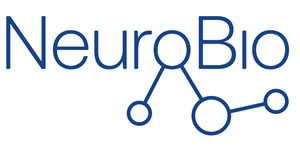A DISRUPTIVE APPROACH TO NEURODEGENERATION
To date, all approaches to developing an effective treatment for Alzheimer’s Disease (AD) have failed, and there is an increasing lack of confidence in the efficacy of combating the well-established targets amyloid or tau (Small and Greenfield, 2015). Moreover, existing marketed therapies merely tackle symptoms in the late stages, yet don’t actually halt the progression of the continuing cycle of brain cell death. There are two main reasons for the lack of success so far:
- The 20-year time lag between the onset of the degenerative process and the eventual appearance of cognitive impairment, means that a valuable time window is lost before any treatment can be commenced: in turn, this delay is due to the lack of any indication, other than the eventual behavioural signs, that Alzheimer’s has actually started. A routine blood test for a biomarker is urgently needed for revealing brain cell loss as soon as it is underway: as yet no such test has been developed since it would need to be predicated on identification of the basic mechanism underlying degeneration. However…
- All ‘theories’ to date mistakenly regard brain cells as generic: whilst neurons might be equally vulnerable to inflammation, amyloid attack and other secondary symptomatic malfunctions, the reason why some cells are selectively prone to degeneration in the first place, has not been addressed by any other group: but only when this selective causal mechanism is identified, can it be exploited for developing a faithful biomarker and intercepted with an effective therapy.
The Neuro-Bio approach is disruptive and challenges existing dogma targeting amyloid, focusing instead on identifying the pivotal basic mechanism by asking why only certain cells are primarily vulnerable in AD, and then exploring their special properties for potential manipulation. We have suggested a novel theory of AD (Garcia-Ratés, S., Greenfield, S. A. (2022)) that neurodegeneration is an aberrant form of development that is activated only in a key group of cells that alone can mobilise a mechanism for growth, but one that turns toxic in a mature brain. This scenario accounts for all the known clinical facts e.g. time lag for cognitive symptoms, co-pathology with Parkinson’s Disease, and selective neuronal vulnerability.
